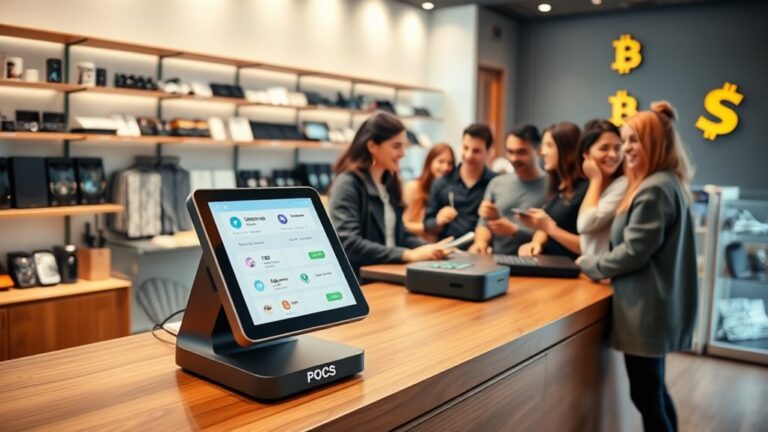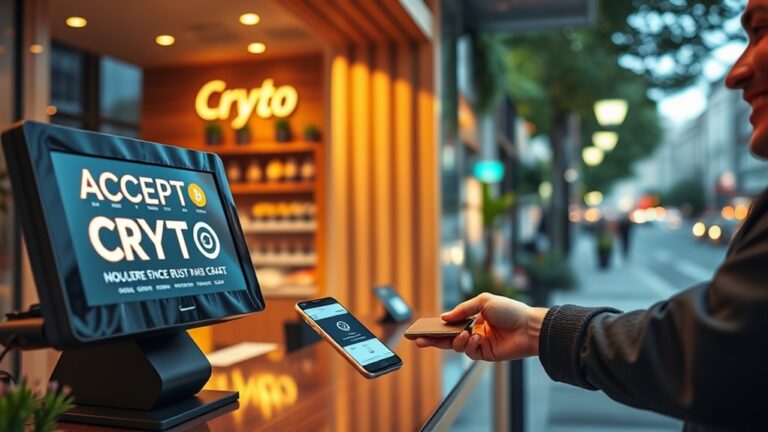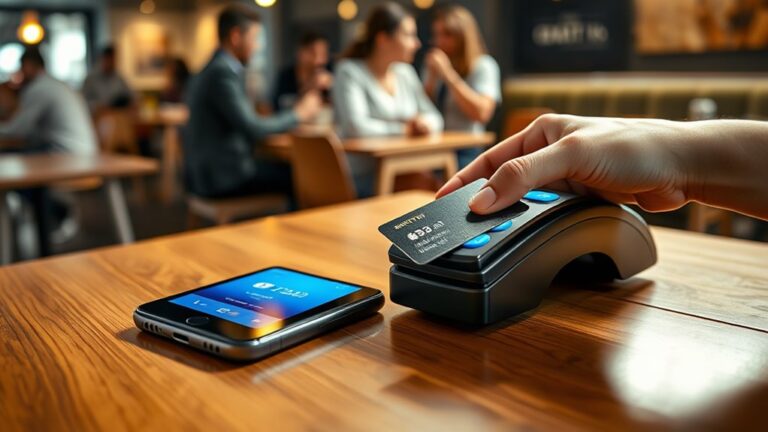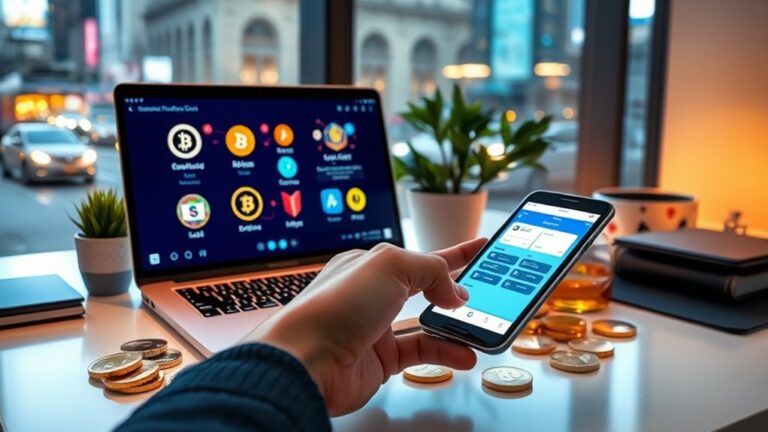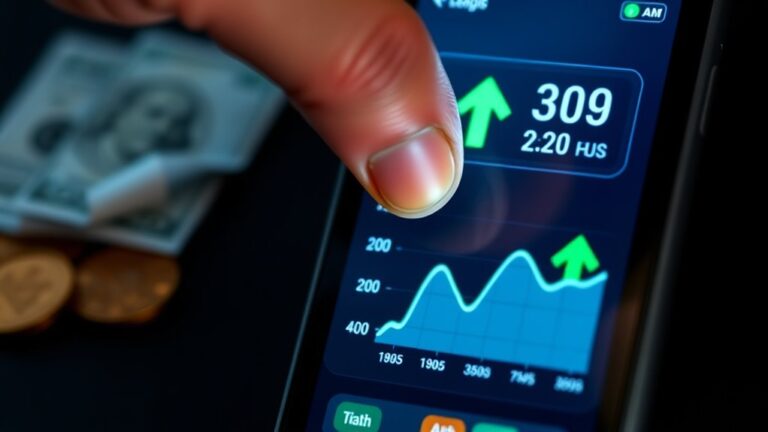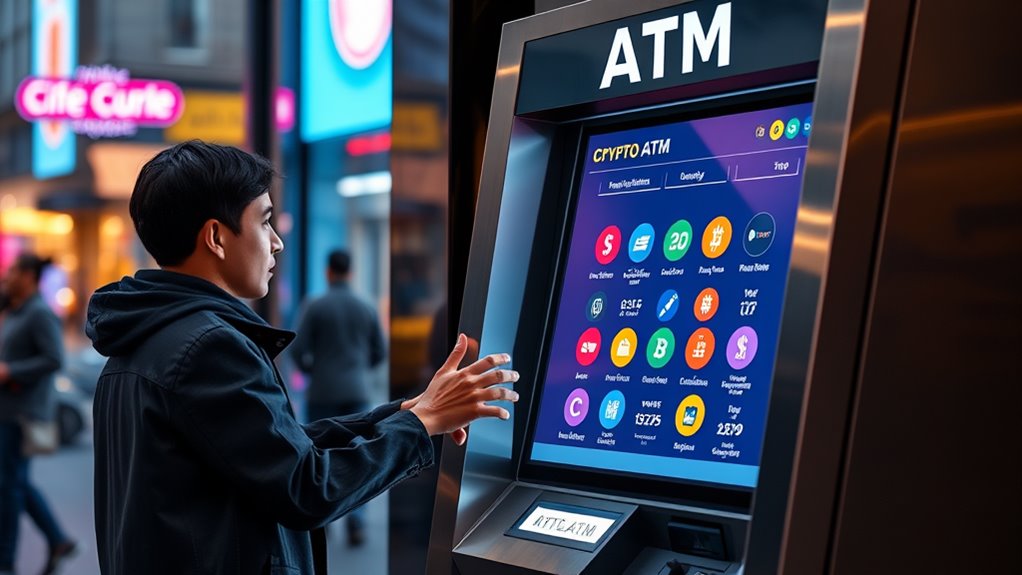
How Crypto ATMs Work: A Step-by-Step Guide
Crypto ATMs are machines that allow users to buy and sometimes sell cryptocurrencies. To use these ATMs, individuals select a cryptocurrency, have a digital wallet, and insert cash to complete the transaction. Some ATMs only support purchases, while others allow selling. Users must also meet certain requirements, such as providing ID and adhering to transaction limits. Security measures are in place to protect users’ information and guarantee compliance with regulations. Further details about the processes and fees can enhance understanding.
Key Takeaways
- Crypto ATMs allow users to buy and sell cryptocurrencies, connecting them to blockchain networks and exchanges.
- Users must have a digital wallet to complete transactions and can select their desired cryptocurrency at the ATM.
- The buying process involves inserting cash, confirming the transaction, and receiving a receipt, with fees typically ranging from 7% to 12%.
- For selling Bitcoin, users must locate a compatible ATM, verify their identity, and scan a QR code to receive cash.
- Compliance with regulatory standards and security measures, like KYC procedures, ensures safe and trustworthy transactions at crypto ATMs.
Understanding Crypto ATMs
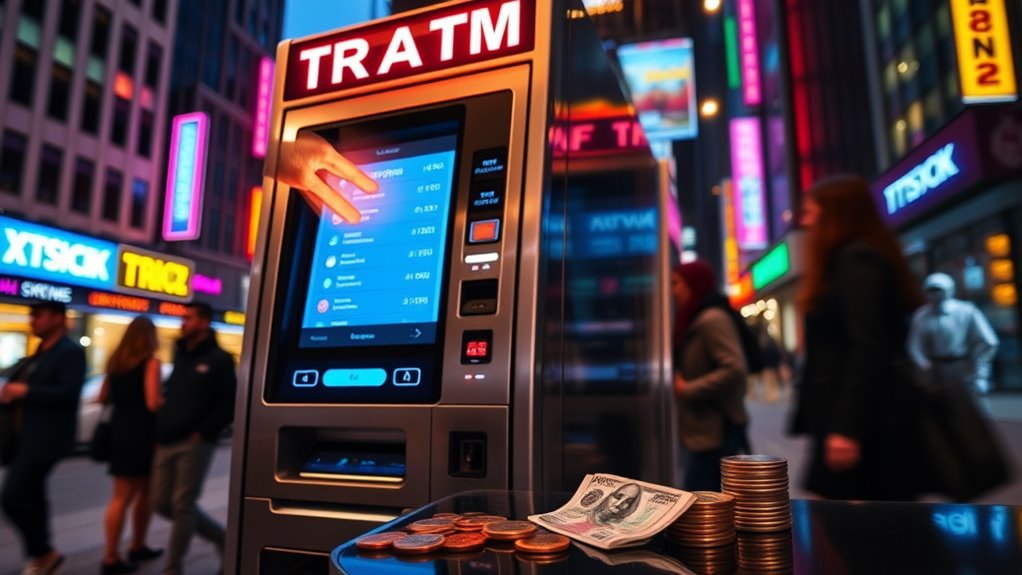
Crypto ATMs, or cryptocurrency automated teller machines, serve as electronic kiosks that enable users to buy and sometimes sell cryptocurrencies using cash or debit and credit cards.
These machines facilitate transactions by connecting users to cryptocurrency exchanges and blockchain networks. It is important to note that not all crypto ATMs allow users to sell cryptocurrencies; some are exclusively for purchasing.
Crypto ATMs connect users to exchanges and blockchain networks, offering a mix of buying and selling options for cryptocurrencies.
Typically located in public spaces such as cafes, shops, and transport hubs, their availability enhances user accessibility.
Regulatory requirements surrounding crypto ATMs vary globally, with some countries imposing strict regulations while others adopt more relaxed approaches.
Types of Crypto ATMs
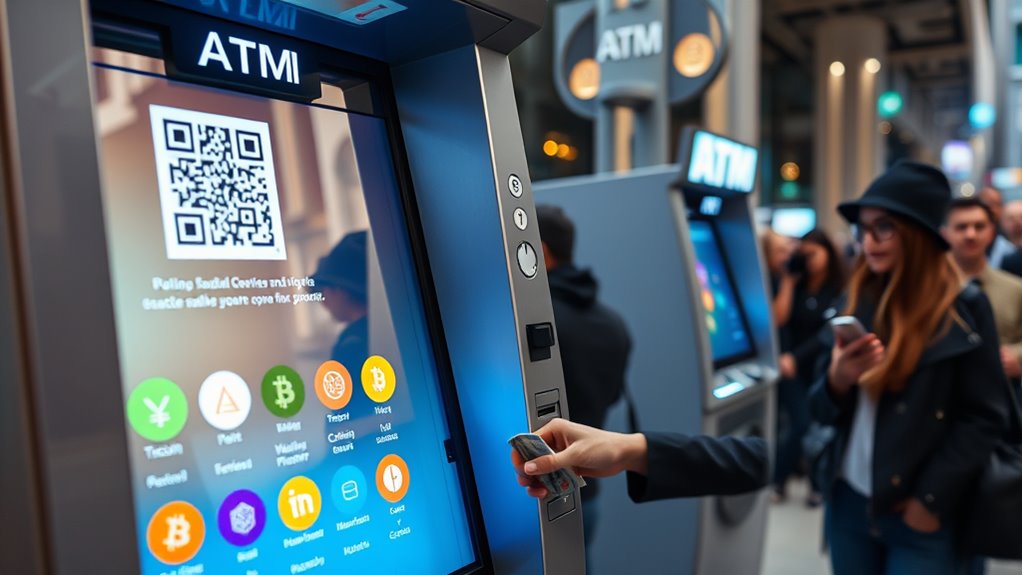
Crypto ATMs can be categorized primarily into two types: buy-only ATMs and buy-and-sell machines.
Buy-only ATMs facilitate the purchase of cryptocurrencies, while buy-and-sell machines allow users to both buy and sell digital currencies.
Additionally, the variety of cryptocurrencies offered can differ between machines, with some supporting only Bitcoin and others accommodating multiple coins like Ethereum and Litecoin.
Buy-Only ATMs Overview
Buy-only ATMs represent a specific category within the broader landscape of cryptocurrency transaction machines. These devices enable users to purchase cryptocurrencies, primarily Bitcoin, while not allowing any sales or exchanges.
They operate by connecting directly to cryptocurrency exchanges, ensuring real-time transactions. Equipped with user-friendly interfaces, many models feature cash acceptors and optional printers. Users must have a digital wallet, as they will need to scan a QR code to complete their purchases.
Various models offer unique features, such as fingerprint scanners and remote management. While buy-only ATMs provide easy access to cryptocurrencies without the need for a bank account, they often come with higher transaction fees compared to online exchanges, which may be a consideration for users. Additionally, integrating a reliable payment platform can enhance the overall user experience and security when purchasing cryptocurrencies through these ATMs.
Buy & Sell Machines
A variety of machines exist in the cryptocurrency landscape, each serving distinct functions for users. Among these, buy and sell machines, also known as bidirectional ATMs, offer greater flexibility. These machines facilitate both the purchase and sale of cryptocurrencies, allowing users to convert cash into digital assets and vice versa.
| Machine Type | Functionality | Key Features |
|---|---|---|
| Unidirectional | Buy cryptocurrencies only | Accepts cash, no selling option |
| Bidirectional | Buy and sell cryptocurrencies | Cash recycling, QR code interaction |
| Transaction Support | Debit/Credit card payments | User verification required for selling |
| Global Reach | Deployed in over 60 countries | Enhanced privacy and security |
These machines enhance accessibility, allowing users to engage in cryptocurrency transactions without needing a bank account. Additionally, they often utilize crypto payment gateways to streamline and secure the transaction process.
Cryptocurrency Variety Offered
In the evolving landscape of cryptocurrency transactions, a diverse range of digital currencies is available at various types of ATMs. Most crypto ATMs support well-known cryptocurrencies, while some also offer a selection of additional coins. This variety caters to different user preferences and needs.
- Popular Cryptocurrencies: Bitcoin, Ethereum, and Litecoin.
- Additional Coins: Bitcoin Cash, Dash, Dogecoin, and Shiba Inu.
- Stablecoins Support: Depending on the operator, stablecoins may be available.
- Token Support: Some ATMs feature tokens like LINK and USDT.
- Operator Flexibility: Operators choose which cryptocurrencies to offer based on market demand.
This flexibility allows users to access a broad spectrum of digital assets conveniently.
The Buying Process
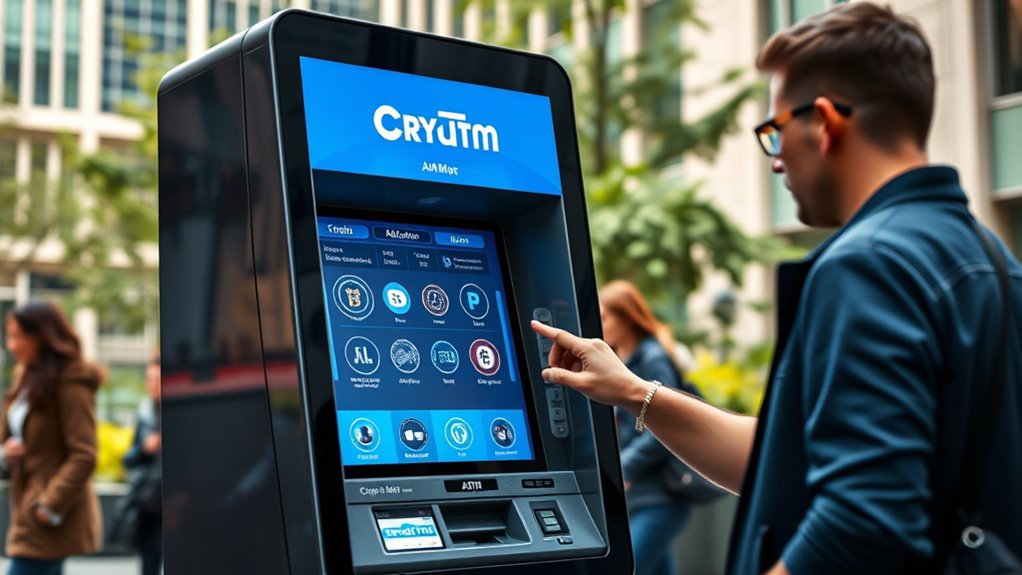
The buying process at a crypto ATM begins with selecting the type of cryptocurrency to purchase, typically Bitcoin or another supported option.
After making the selection, users are prompted to insert cash, which will be exchanged for the chosen cryptocurrency.
Once the transaction is processed, a receipt is provided, confirming the purchase details for the user’s records.
Selecting Cryptocurrency Type
How does one decide which cryptocurrency to purchase at a crypto ATM? The selection process revolves around the available options provided by the machine. Most Bitcoin ATMs support a variety of cryptocurrencies, although Bitcoin remains the most common.
Users can consider the following factors when making their choice:
- Available Cryptocurrencies: Check which coins the ATM supports, such as Bitcoin, Ethereum, and Litecoin.
- Market Familiarity: Users may prefer more widely recognized coins due to their stability.
- Regulatory Compliance: Some cryptocurrencies may not be available based on local regulations.
- Software Limitations: The ATM’s software determines which cryptocurrencies can be purchased.
- User Demand: Operators configure ATMs based on the demand for certain cryptocurrencies.
Additionally, users might want to explore options like Ripple’s cross-border capabilities, which enhance transaction efficiency for international purchases.
Inserting Cash Payment
After selecting the desired cryptocurrency, users proceed to the next step of the buying process: inserting cash payment at the ATM. Users must first guarantee they have the required cash ready for deposit. Upon initiating the transaction, the ATM will prompt users to insert their cash. The machine then validates the amount, checking it against the minimum and maximum limits. Additionally, transaction fees are calculated and displayed during this process.
| Step | Action Required | Important Note |
|---|---|---|
| Cash Insertion | Insert cash into ATM | Guarantee cash is readily available |
| Amount Validation | ATM checks cash amount | Must meet set limits |
| Fees Calculation | Displayed by ATM | Typically 7% to 12% |
Receiving Transaction Receipt
Once cash is successfully inserted and the transaction is initiated, users can expect to receive a transaction receipt, which serves several important purposes in the cryptocurrency buying process.
This receipt is vital for maintaining transaction records and verifying details.
- Transaction ID (TXID): A unique identifier for tracking the transaction.
- Wallet Address: The destination address where the Bitcoin is sent.
- Transaction Amount: The exact Bitcoin amount transferred.
- Transaction Fees: Information about any fees associated with the transaction.
- Blockchain Network: Notation of whether the transaction occurs on the Bitcoin network.
The receipt not only aids in tracking the transaction status through blockchain explorers but also provides essential information for resolving any potential issues with the ATM provider.
The Selling Process
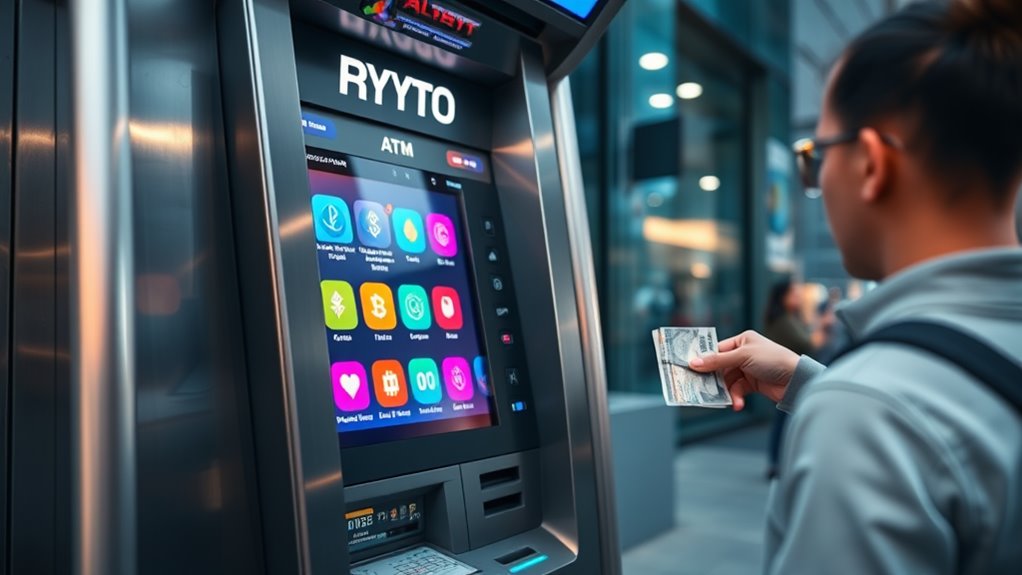
When individuals decide to sell Bitcoin using an ATM, they must first confirm they locate a compatible machine, as not all Bitcoin ATMs support selling; in fact, only about 40% do.
To find suitable ATMs, users can utilize online locators like Coin ATM Radar.
Once at a compatible machine, the process begins by selecting the “Sell Bitcoin” option on the screen. Users enter the amount of Bitcoin to sell, followed by a verification process that may require phone number confirmation or ID scanning.
The ATM generates a QR code for the transaction, which users scan with their digital wallet. After sending the specified amount of Bitcoin and waiting for confirmation, cash can be collected once the transaction is processed.
Fees and Limitations
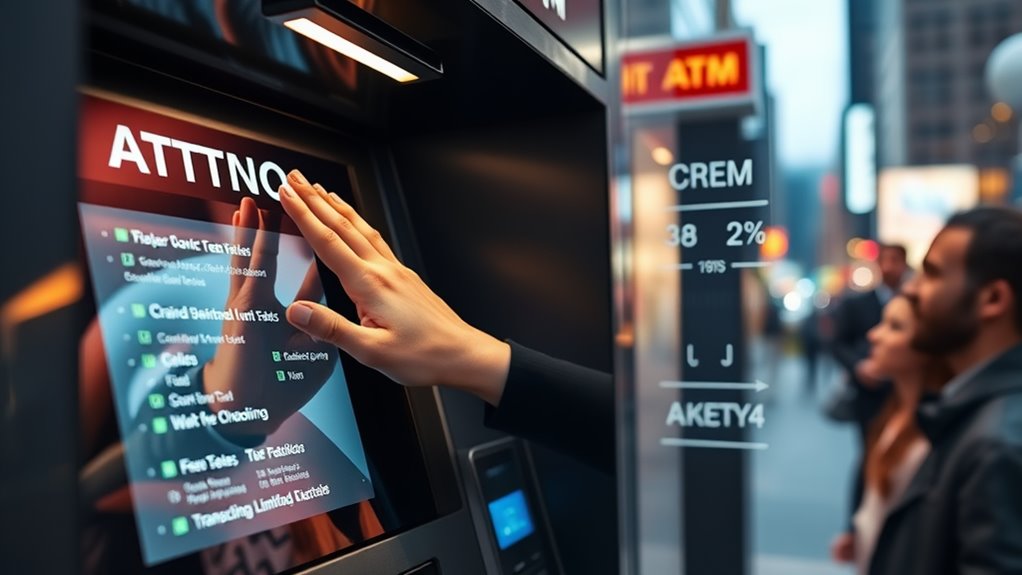
Fees and limitations are critical factors to take into account when using crypto ATMs, as they can greatly impact the overall experience and cost of transactions.
Users should be aware of the following aspects:
Users need to consider important factors such as fees and transaction limits when using crypto ATMs.
- Fee Range: Transaction fees typically vary between 5% and 25%, depending on the operator and location.
- Operational Costs: Higher fees often reflect the costs associated with maintaining and securing the machines.
- Transaction Limits: Daily limits usually range from $3,000 to $10,000, with some operators allowing up to $50,000 after pre-registration.
- Minimum Amounts: Most ATMs require a minimum transaction of around $20.
- Regional Variations: Local regulations can affect both fees and transaction limits, leading to discrepancies across different areas.
User Requirements for Transactions
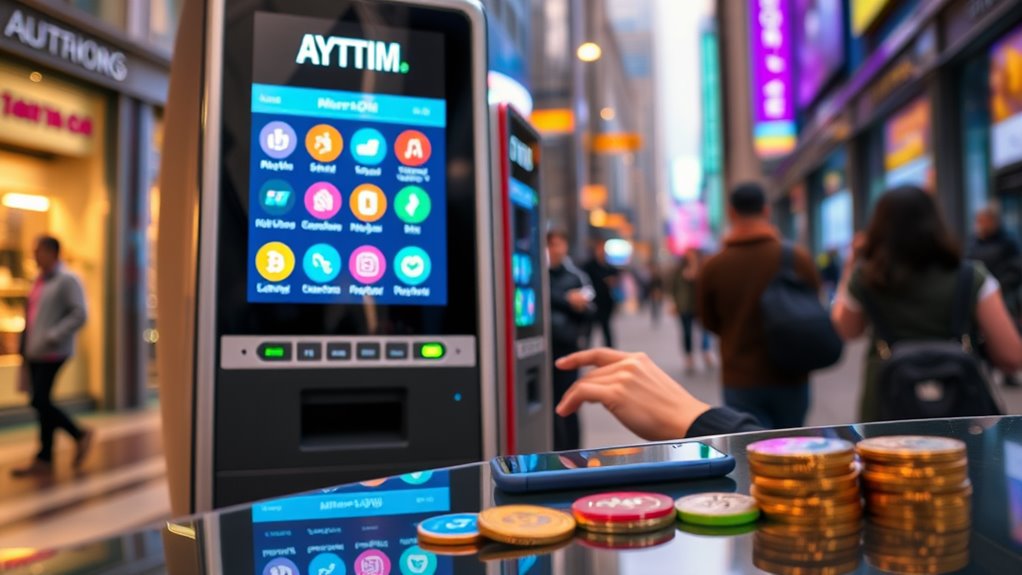
User requirements for transactions at crypto ATMs are fundamental to guarantee a smooth and compliant experience.
Users typically need a government-issued ID for transactions, with lower-tier purchases requiring minimal information like name and date of birth. A digital wallet is essential for receiving cryptocurrency, and users must provide a unique wallet address, often scanned via QR code.
Transaction limits vary, with purchases under $960 needing less identification, while higher amounts require additional verification. Cash handling is direct, as users must insert cash into the ATM.
Finally, technical preparedness is critical; understanding the ATM interface and having wallet information ready can help avoid complications during transactions. Familiarity with these requirements guarantees a more efficient experience.
Security Measures and Compliance
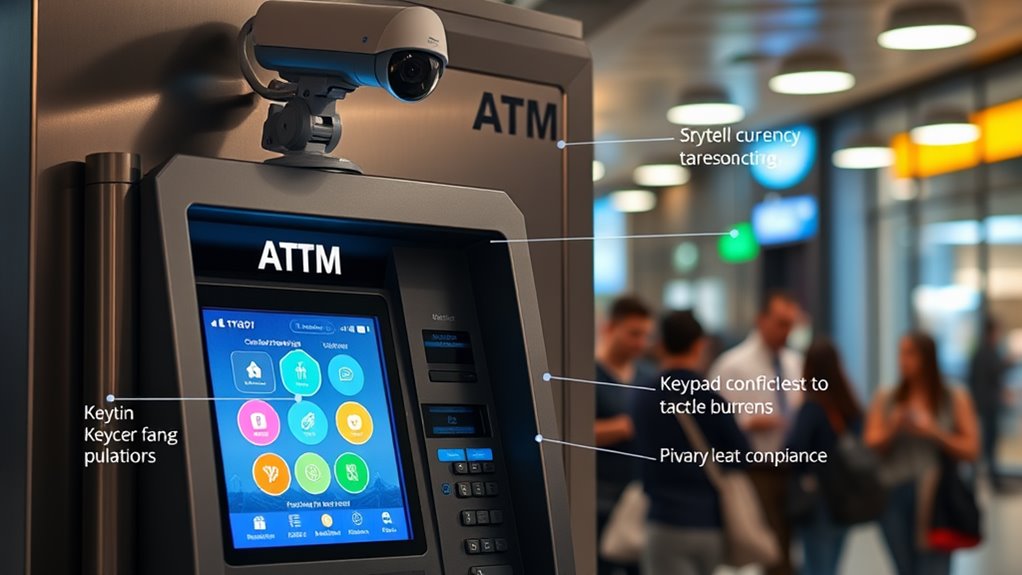
Security measures and compliance are essential components of the operation of cryptocurrency ATMs, ensuring both user protection and adherence to legal standards.
Security measures and compliance are vital for cryptocurrency ATMs, protecting users and ensuring legal adherence.
These measures encompass a variety of practices designed to safeguard users and the integrity of transactions.
- Secure Locations: Installed in high-traffic, monitored areas to reduce risks.
- Tamper-Resistant Enclosures: Protect internal components from unauthorized access.
- Encryption Protocols: Secure communication between ATMs and servers to protect user data.
- Know Your Customer (KYC): Identity verification procedures for transaction security.
- Real-Time Monitoring: Continuous oversight to detect and address suspicious activities.
Frequently Asked Questions
Can I Use a Crypto ATM Without a Bank Account?
Yes, individuals can use crypto ATMs without a bank account. These machines allow transactions using cash or debit cards, enabling users to buy or sell cryptocurrency directly, enhancing accessibility and privacy in the process.
What Cryptocurrencies Can I Buy at Crypto ATMS?
Crypto ATMs primarily offer Bitcoin, with many also providing options like Litecoin, Ethereum, and Dogecoin. The specific cryptocurrencies available can vary based on the ATM operator, so users should check local machines for options.
Are Crypto ATMS Available Internationally?
Across bustling city streets and quiet rural corners, crypto ATMs stand ready, bridging the gap to digital currencies. Available in over 60 countries, they enhance accessibility for users seeking Bitcoin, Ethereum, and more.
How Do I Find a Nearby Crypto ATM?
To find a nearby crypto ATM, individuals can use online tools such as location-based searches, Bitcoin ATM maps, and operators’ websites, which provide detailed listings and directions to facilitate access to these machines.
Can I Use a Prepaid Card at Crypto ATMS?
Prepaid cards typically cannot be used directly at crypto ATMs, which usually require cash or specific card types. However, some online platforms allow prepaid cards for crypto purchases when linked to digital wallets.
Conclusion
To conclude, crypto ATMs provide a convenient way for users to buy and sell cryptocurrencies. Understanding their operation, including fees, user requirements, and security measures, is essential for a smooth transaction experience. For example, a user named Alex visited a local crypto ATM to purchase Bitcoin for the first time. By following the outlined steps, Alex successfully completed the transaction, illustrating the accessibility and functionality of these machines in the growing digital currency landscape.



